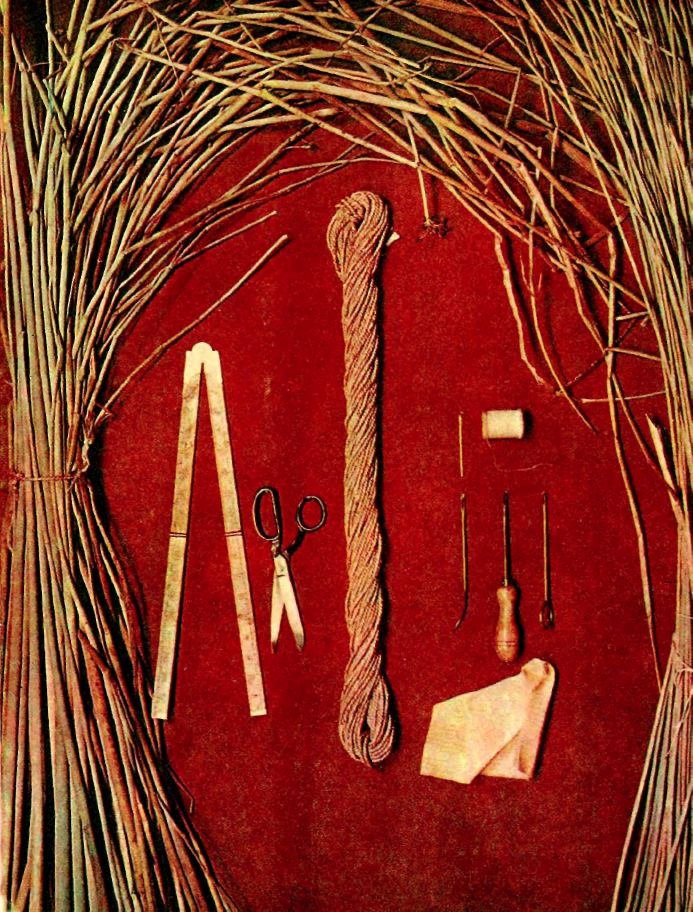
Left and right: harvested bundles of plants; the left — thick stems — is used for the stands; on the right — stems are thinner, they make a good material for weaving.
In the centre: measuring ruler, scissors, ball of twine, a large darning needle and linen thread for stitching the braids, sack needle for coiled goods, two sewing for threading (right normal "shorewalk" for the ball), cloth for wiping and flattening the soaked stems.
Harvesting of marsh plants (reeds, cattail, rushes) produced in June — July or in September. Due to the fragile nature of the stems it is advisable to prepare them in small bundles. Cut stems should be smooth and clean. Harvested stems before storage it should be dried in natural conditions (not heaters!), scattering, for example, in the attic or hanging beams under a canopy, not to expose them to the influence of the solar rays from the sun stems burn out, losing the natural beautiful color, and become too fragile. Never store the stalks in plastic bags, they were covered with black spots, will become porous and completely unusable. During operation, leave the stems wrapped in wet cloth not more than a day, otherwise they will lose a good color.
Before beginning work, the stems should be sorted by size. Dry stems can easily break, so they must be handled very carefully.
To prepare the stems for work, soak them in water for ten minutes. If it is raining, just leave the beam on for an hour in the yard, but then check whether it gets wet. Keep in mind that the stems within the bundle can remain completely dry. Make sure the ends are good, too wet, otherwise a lot of material will go to waste.
Wet the stems, wrap in a wet cloth and hold it there for two or three hours. The fabric should be dense enough to contain the desired amount of moisture. For this purpose it is better to use old flannelette quilt or blanket. Do not steep the stems are too long as they will give a significant shrinkage after the product is ready. Prepared to work take the stems from the bunch only several pieces (so they don't have time to dry).
To get started, you need to make two more cases. Each stem should be wiped with a wet cloth, to remove air and excess water, and clean it up and flattening. Besides, it is necessary to cut thin and weak ends. Be especially careful with thin stems.



